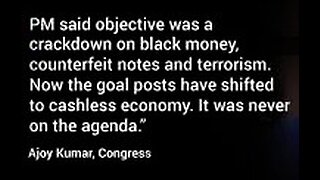De Dollarization: What's Behind The Banking Failures
In a shocking revelation on Monday, April 24th, First Republic Bank reported a staggering 40% decline in deposits during the first quarter, surpassing already pessimistic expectations. This alarming figure encompassed the $30 billion cash injection received from larger banks, leading financial analysts at CNBC to estimate that, excluding these deposits, First Republic's decline would have exceeded 50%.
Simultaneously, the bank's stock value continued to plummet, sparking discussions about a potential "rescue deal" in response to the bank's announcement that it was actively reviewing strategic options to reshape its balance sheet.
Advisors to First Republic were advocating for the sale of the bank, emphasizing that allowing it to fail would incur even higher regulatory costs and fees. Another proposed solution involved issuing additional stock to dilute shareholders and generate supplementary capital.
The bank's volatility prompted US Banking Regulators to consider downgrading the institution, which would subsequently restrict its borrowing capacity from the Federal Reserve, further jeopardizing its chances of a successful turnaround. Additionally, sources indicated that the government was no longer willing to intervene, refusing to provide assistance.
Despite this uncertain climate, the bankers involved still anticipated a government takeover, while the government hoped that First Republic could negotiate a deal to prevent its failure and safeguard the interests of stakeholders. The situation has become a game of chicken, where the outcome hinges on whether a government takeover, a cash injection from other banks, or a collapse will occur first. Presently, it remains too early to definitively determine the course of events.
Shifting our focus to the US dollar, recent developments have showcased a decline in its global dominance. The Chinese yuan, in particular, has surpassed the US dollar as the most utilized cross-border currency. This transition has been a gradual process initiated by China in 2010 when the United States launched its first round of $600 billion stimulus, causing the dollar to depreciate and prompting China to strive for currency stability.
Over time, China has increasingly reduced its reliance on the US dollar, culminating in the formation of a financial alliance in 2020 aimed at abandoning the dollar altogether. More recently, countries such as Brazil and Argentina have joined this trend, opting to transact with China using the yuan, given Brazil's status as the largest recipient of Chinese investment in Latin America.
This global trend, known as "de-dollarization," seeks to replace or reduce the dominance of the US dollar as the world's reserve currency by introducing more competition. The implications and level of concern surrounding this shift are subjective and depend on individual perspectives.
While the yuan is currently only utilized in 4.5% of global transactions, it signifies a growing trend in China's dominance and the diminishing stature of the US dollar. While this development warrants attention, it may ultimately have minimal impact in the broader context of global economics.
ABOUT OUR CHANNEL
Our channel is about financial topics. We cover lots of cool stuff such as investing, financial trends and tips on how to make money.
Check out our channel here:
https://www.youtube.com/moneymonstersinfo
Don’t forget to subscribe!
If you like what you see please take a second and subscribe to our channel @moneymonstersinfo for 5 videos like this and all things financial posted every week. Thanks for watching and see you in the next one!
CHECK OUT OUR OTHER VIDEOS
https://www.youtube.com/watch?v=4JGBzjaqYPw
https://www.youtube.com/watch?v=2e_mLW34gjI
https://www.youtube.com/watch?v=H8mU4w8wnXs
-
 42:09
42:09
BrookeCerda
10 months agoBiden's Central Bank Digital Currency - Excecutive Order from Hell
264 -
 11:22
11:22
DIGITAL WATCHTOWER
1 year agoThe Banking Collapse Has Begun
224 -
 25:04
25:04
Midas Gold Group
1 year agoThe Risky Banking Sector | The Gold Standard 2319
110 -
 1:02:36
1:02:36
Palisades Gold Radio
3 years agoAlasdair Macleod: EU Banking System Imploding
35 -
 8:10
8:10
TheGlobalMacroDigest
6 months agoThe Next Banking Crisis Is Now
30 -
 12:01
12:01
The Money GPS
1 year ago $0.16 earnedBanking Meltdown as Fed Now Creating Massive Dollar Devaluation Scheme!
198 -
 1:10:59
1:10:59
ReasonTV
1 year agoBlame government for the new banking crisis.
710 -
 1:08:30
1:08:30
Entitled Millennials
1 year agoSVB Collapse, Bank Bailouts, and Dedollarization Thinking Out Loud
60 -
 3:50
3:50
iFlip Invest
1 year agoMoney Matters: Safeguarding Your Finances Amid Bank Failures
2 -
 3:58
3:58
BetterWithBitcoin
1 year agoThe Banking Crisis is Not Over - Will First Republic be the NEXT Bank to Collapse?
139